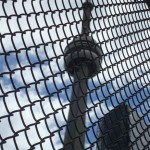The Bloated G20 Hits Toronto
 Toronto is a city under siege. Walls of concrete have divided the downtown core. Police redirect cyclists past the security barriers. All leading locals to wonder: Couldn't the G20 meet by teleconference?
Toronto is a city under siege. Walls of concrete have divided the downtown core. Police redirect cyclists past the security barriers. All leading locals to wonder: Couldn't the G20 meet by teleconference?
Toronto. As Monty Python would say: This is a city under siege. Walls of concrete have divided the downtown core. Police redirect cyclists past the security barriers. All leading locals to wonder: Couldn't the G20 meet by teleconference?
The evolution of the G5 to the G7 to the G8 to the G20 is a parable of the growth of government. The original idea advanced by French President Valery Giscard d’Estaing 35 years ago was simple and powerful: a two-day summit of the leaders of the US, Japan, West Germany, UK and France to discuss economic issues. No agenda, no resolutions - just a rare chance for human relationship building and candid off-the-record conversation among the leaders of the world's biggest capitalist democracies. It was a good idea then, it would be a good idea now.
But over the years, the meeting has grown and grown and grown. With so many leaders taking part, an agenda becomes indispensable. If there is an agenda, there must be staffing. If there is staffing, staffers must attend. With so many attendees, the meeting would look like a failure unless it produced some kind of communiqué, resolution, or action plan. And with everybody expecting a communiqué, resolution or action plan, the off-the-record meeting now attracts hundreds and thousands of reporters, bloggers and assorted other media types.
Over the years, a meeting that was intended to open informal and personal communication has metamorphosed into exactly the very thing to which it was supposed to be an alternative. D'Estaing's attempt to break free from his bureaucracy has produced a vast new project for bureaucracy. The circle has been closed, as always.